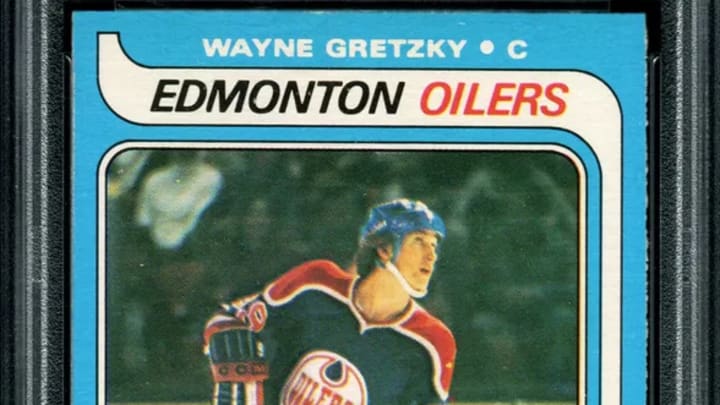1979 O-Pee-Chee Wayne Gretzky Rookie Worth Grading?

In this story:
Welcome to the latest version of The Graded Upside, a series in which the upside value potential of a raw sports card is compared to that of its graded counterparts to determine whether collectors who own the card should or shouldn’t submit it for grading. In this article, we’re going to focus on the one and only 1979 O-Pee-Chee Wayne Gretzky, which over the last 45 years, has set the gold standard when it comes to vintage hockey card collecting.

RELATED: Sold ... Again! 1979-80 O-Pee-Chee Hockey Card Case Goes For $2.5 Million
One of the first things collectors must understand is the difference between Topps and O-Pee-Chee. Although the cards are similar at first glance, O-Pee-Chee is basically Topps’ cousin to the north and the cards themselves are printed on a much lighter cardstock, which in turn, makes the probability of earning a high grade (PSA 7 or higher) a very rare feat. In addition to the thinner cardstock, chipping along the card’s edges coupled with known print-related blemishes across the entire production run, also play key roles when it comes to submitting these cards for grading.
RELATED: 1984 O-Pee-Chee Wayne Gretzky (All-Star Card) PSA 10: A Rare Find For Collectors

When it comes to the raw (or ungraded) version of this card, values can range from roughly $500 on the lower side to as high as $800 for those that are clean to the naked eye. With that said, the Graded Upside Potential for this card is significant and here’s a breakdown of this looks like for PSA 7, PSA 8, PSA 9, and the PSA 10 version of this card.
RELATED: Connor Bedard's Hockey Card Listed for $4,000 on Secondary Market

According to PSAs website, of the 63,252 graded cards that carry a grade of PSA 1 or higher, the PSA 7 versions (population: 1432) of this card have sold in the range $3,800–$4,500, PSA 8 versions (population: 830) have sold for $11,000–$16,000, the PSA 9 versions (population: 95) have sold for $125,000–$140,000, and the elusive PSA 10 versions (population: 2) has shattered records, with one card selling for $3.75 Million back in 2021.

Let’s take a closer look at these numbers and break things down using a population analysis and then an upside potential analysis. From a graded population perspective of cards receiving at least a grade of PSA 1, the PSA 7s of this card make up 2.26% of the graded population, the PSA 8s of this card make up 1.31% of the graded population, the PSA 9s of this card make up 0.15% of the graded population, and the ever elusive PSA 10s of this card make up 0.0031% of the graded population.

From an upside analysis perspective, if you were to purchase a raw version of this card in the above referenced range of $500-$800, submit it for grading, and have it come back at a grade of at least a PSA 7 here’s what your graded upside potential would look like. For the PSA 7 versions of this card you’re looking at an upside potential of 7.6x on the low side to as high as 9.0x on the high side. For the PSA 8 versions of this card you’re looking at an upside potential of 22x on the low side to as high as 30x on the high side. For the PSA 9 versions of this card you’re looking at an upside potential of 250x on the low side to as high as 270x on the high side. For the ever-elusive PSA 10 versions of this card you’re looking at an upside potential of 5000x on the low side to as high as 7500x on the high side.

Now that we’ve taken a deeper dive into the Graded Upside of the 1979 O-Pee-Chee Wayne Gretzky Rookie Card, we’ve successfully determined that if you’re either a buyer looking to acquire the raw version of this card or if you’re someone who owns the raw version of this card, it’s certainly best to submit it for grading given the significant upside potential if in fact this card were to come back with at least a grade of PSA 7.

Passionate sports card collector and writer based in Queens, NY. Lifelong fan of the New York Mets, Jets, and Rangers. Covering sports cards and collectibles with deep industry knowledge and enthusiasm, while bringing a fresh perspective to the ever-evolving hobby world on http://SI.com/collectibles.
Follow MJSchilling